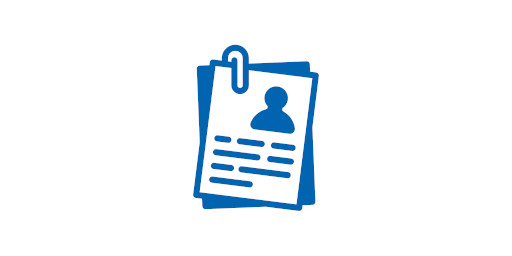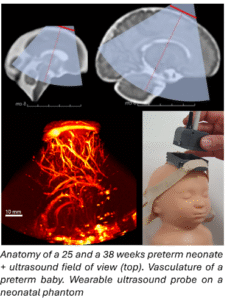
Research Internship : Realistic vascular and structural neonatal head phantom to improve the optimization of neonatal functional ultrasound probes
 Supervisor:
Supervisor:
Name: Charlie Demené & Jérome Baranger
E-mail: charlie.demene@espci.fr, jerome.baranger@espci.fr
Project description :
Objective of the project: build a realistic neonatal brain phantom and test its acoustical properties using ultrasound imaging systems.
Context: Recent work at Physique pour la Médecine Paris has opened major new possibilities for using ultrasound in neuroscience. We developed a new brain imaging method called functional Ultrasound (fUltrasound), similar in principle to fMRI, which can visualize brain activity while it responds to stimuli or performs tasks. The technique relies on ultrafast imaging of blood flow, making it highly sensitive to small changes in cerebral blood volume and able to detect neurovascular coupling (increased blood flow linked to local neuron activation).
One promising clinical application is functional brain imaging in newborns through the fontanelle. This approach has already allowed the detection of epileptic foci in newborns with brain disorders—children who often resist treatment and for whom conventional imaging options are limited. Beyond that, the method could be used to study brain connectivity for diagnostics, or to investigate fundamental questions about development, such as how hearing matures and how language is acquired.
Goal and methods: To optimize imaging parameters, researchers need realistic models (also called phantoms) that mimic the acoustic properties of a patient’s head (brain, skull, skin), as well as blood flow. Since functional Ultrasound (fUS) is a new technique, no suitable phantom currently exists to reproduce this specific type of contrast. The goal of this internship is therefore to create a realistic neonatal head phantom, replicating both anatomy and typical vascularization. To achieve this, the student will both elaborate on numerical data (structural and vascular images database), available methods to mimic acoustic contrasts (like copolymer in oil acoustic materials) and also explore the possibilities offered by 3D printing. The phantom will then be tested with the lab’s ultrasound imaging tools, and could ultimately be used to optimize 3D vascular reconstruction parameters for the ultrasound-based neuroimaging system designed for newborn fUS studies.
Candidate Profile: We are looking for a student who is interested in the interface between physics and medicine, proficient with acoustics and coding, preferably with some experience in benchtop experiment.
Contact: Charlie Demené (charlie.demene@espci.fr)





